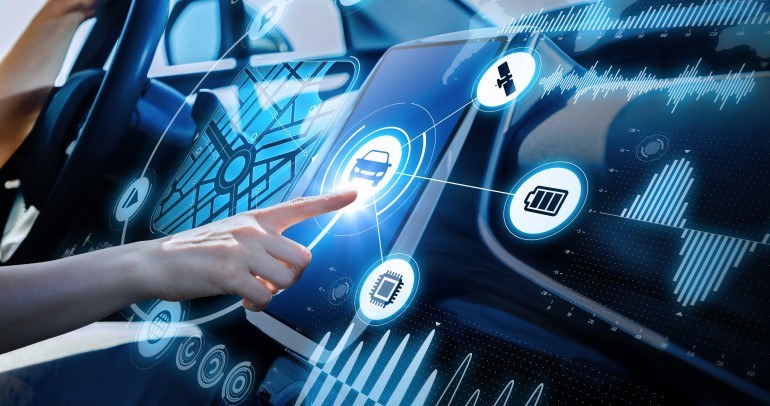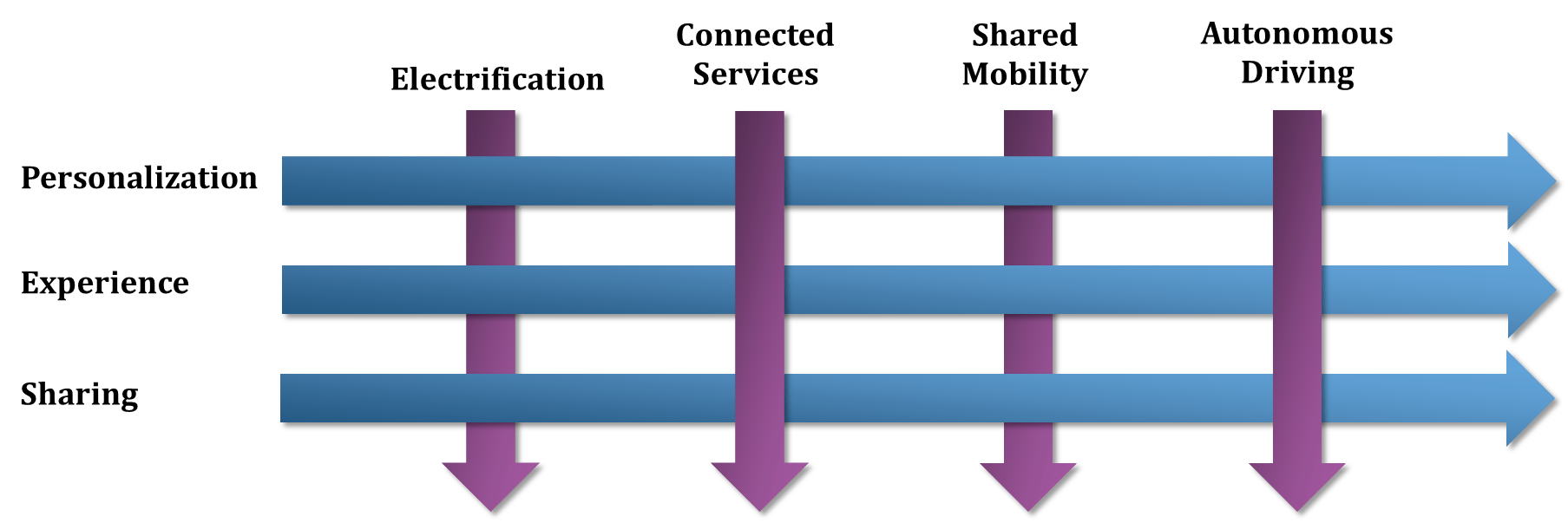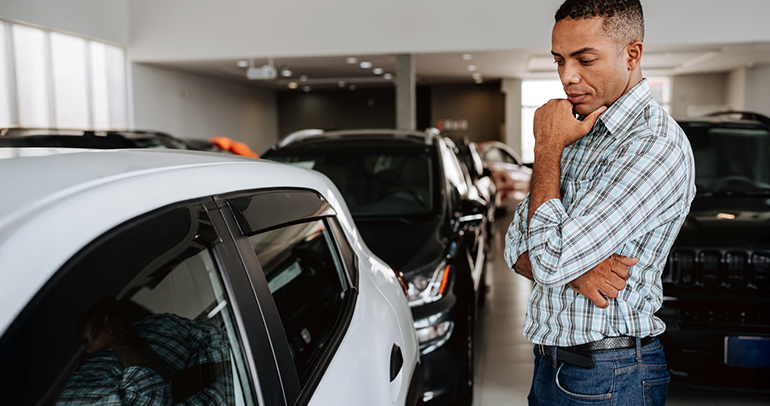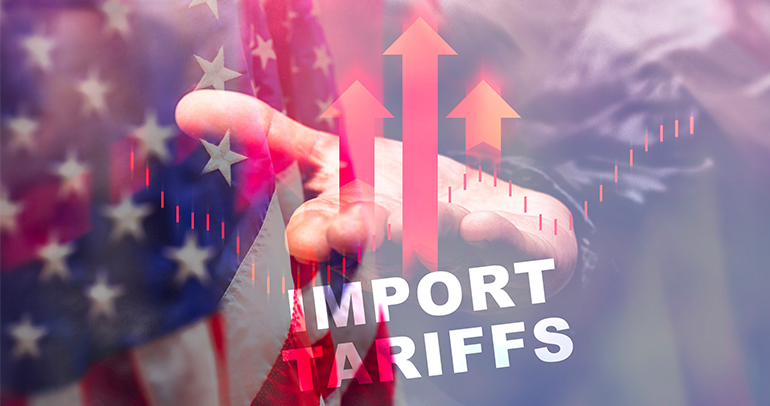
For fans of the Terminator series of movies, it was compelling to think about a world that would foster “The Rise of the Machines.”
For consumers today – living in a switched-on world where the once-impossible is now a foregone conclusion – a profound, shape-shifting change is underway – one that we will call, “The Rise of the Smart Car.”
For those who have experienced the “tip of the iceberg” innovations in today’s currently-available models, it’s easy to see how the continued evolution of automated features, connectedness and yet-to-be-scoped technology will portend a future that is not that far off.
As we walked the floor of the recent Consumer Electronics Show, we gasped at the surreal experience before us. No longer did we see cars, as we, for generations, have come to experience them. Replacing the four wheels and a box were a dizzying array of form factors – designed more to contain, and define, a future driving experience where the exterior is not nearly as relevant as what lives inside. Changeable seats, in-car virtual reality, and holographic systems are among the newest innovations, jockeying to advance the traveling transformation underway.
Another reality that quickly unfolded as we walked the CES: There’s not one universal standard for the smart cars of the future. And, likewise, there’s no universal agreement on what the future “device” should look like. Beyond agreeing that electrification, connectivity, shared mobility and autonomy are the foundation, there’s no unifying approach that would dictate things like how many screens are enough (or too much), what the interior should look like, or how pervasive these connected car systems should be during the driving experience.
This makes it even more imperative that manufacturers, designers and others who earn their salt from the automotive industry, gain a keen understanding of where the motoring future is headed – and to embrace an ideal in which the car will be at the center of how we travel or experience seamless mobility.
“The Car, As We Know It, Is Dead.”
This change from what we have accepted as a “car,” is a movie that we’ve seen before (and, by this, we do not mean a Hollywood production). For the longest time, the phone was a clearly defined object – a box with 12 buttons, a handset and a cord. For generations, there was little debate as to what the phone should look like. Then, at some point, the cord was cut – and the world went crazy. No longer could we envision what the future of the phone would look like. Experimenters tried approaches that eliminated some – or all – of the telephone’s sacred cows – buttons, dials, handsets and cords.
Today, the device we hold – the smartphone – is the result of a tumultuous sea of change in the phone segment. And the “phone” itself – the enablement of point-to-point voice communication – is relegated to a single button on a screen with endless communication choices.

So can we expect that, in similar fashion, the core function of the car – to deliver people and parcels from Point A to Point B – will simply be an item on a long list of what the “smartcar” of the future can do?
Let’s explore in more detail by looking at some themes that were emerging as we absorbed the CES.
Mega Trends Are Alive and Well
- Personalization – Though we can program our favorite waypoints and radio stations in today’s vehicles, consumers – accustomed to downloading whatever apps they desire to their smartphones – will be demanding much greater personalization in the vehicle of the future. Customization of physical and sensory aspects (such as interior lighting and sound), connected services (both remote and in-vehicle), and virtual personal assistants that connect us to the car and to other devices, lead the list.
- Experience – Acquiring possessions is losing ground to the appreciation of an experience. In vehicles, this is manifesting itself by making driving less of the focus, while offering new functions with benefits, such as enhanced comfort, entertainment and productivity – many of which will be available “on demand” to the consumer, through subscription services.
- Sharing – Consumers share more than ever before, both actively (e.g., Facebook) and passively (e.g., location-based apps). Vehicles are joining the fray as sharing becomes not only a common trend, but also a way of accelerating future product developments (i.e. open platforms).
The Automobile Reinvention is Under Way
In order to lead this reinvention, manufacturers, suppliers and technology companies are focusing on four specific areas:
- Electrification – Fossil fuels are giving way to cleaner, more sustainable electricity in vehicles at an accelerating pace. In the bold future, fuel economy and range become secondary considerations outweighed by the benefits of electrification (remember, we didn’t stop using carriages because we ran out of horses). Vehicles will become electrified vessels, which are propelled, connected and personalized with circuitry and current rather than gasoline. It’s not just vehicles that are becoming electrified – from scooters and bikes to buses and semi-trucks, all are offering increasing flexibility, with limited compromise. Moreover, infrastructure improvements – not just added charging points, but apps helping consumers leverage the cheapest and fastest sources of charging – will smooth the wrinkles of some of the current barriers. New charging solutions may emerge, and battery capacity will undoubtedly continue to expand.
- Connectedness – Today, we pair our phone with the car and we consider ourselves “connected.” But the future of connected services includes a variety of variables – human to vehicle, vehicle to vehicle, vehicle to infrastructure, and beyond – that represent a key stepping stone to full autonomy. To that end, the coming of 5G is a game-changer that will bring with it new levels of cellular reliability and speed which can rival our current home/office experience. One of the interesting questions is how we will communicate this new mobility experience. How do we help consumers make the transition from experiencing the physical features of car (“butts in seats”) to the digital experience (“thumbs on buttons”)?
- Shared Mobility – As the relationship with our car transforms into this symbiotic and connected experience, the ideal of vehicle “ownership” or household fleet will change as well. Technologies which will increase utilization efficiency exponentially will also foster greater interest in shared mobility – as consumers may find saving money or reducing carbon footprint more important than individual autonomy. One can envision that more of our transportation needs will no longer be tied to a particular vehicle, but will be portable to the most convenient form of transit on a given day. Integration with other forms of shared mobility – including aviation and rail, or individual mobility, such as scooters – will provide access to everyone, regardless of age, health, income or legal constraints. This likely represents the final step that will facilitate full autonomy.
- Autonomous Driving – One could expect that, at first, we will see the rise of “dedicated” autonomous lanes or zones to provide the clearest path for driverless vehicles. But, along with the physical advances of features and infrastructure must come a way to reassure consumers of their ability to trust the features and functions of an autonomous vehicle. Safety, security and privacy considerations – hallmarks of today’s insecure computing infrastructure – become even more integral when lives are at stake.
So with all that said, it was exciting to witness the beginning of a new era. The opportunities at the intersection of the trends and areas of reinvention are plentiful. Technology will help us to overcome some of the limitations of the manufacturing-based business model, and solutions will come through competition between both established and new players, as the race for the future of mobility has begun.

Are you ready for the rise of the “smartcar?”
If you have questions or would like to continue the conversation about how you can prepare for the future of mobility, click below to send us a note.
Check out our AV Report
Our team dug into how automotive and mobility companies can encourage autonomous vehicle (AV) adoption amid consumers who fear self-driving technologies. Click the button below to read our report – An Autonomous Future: Building Trust in a Driverless World












